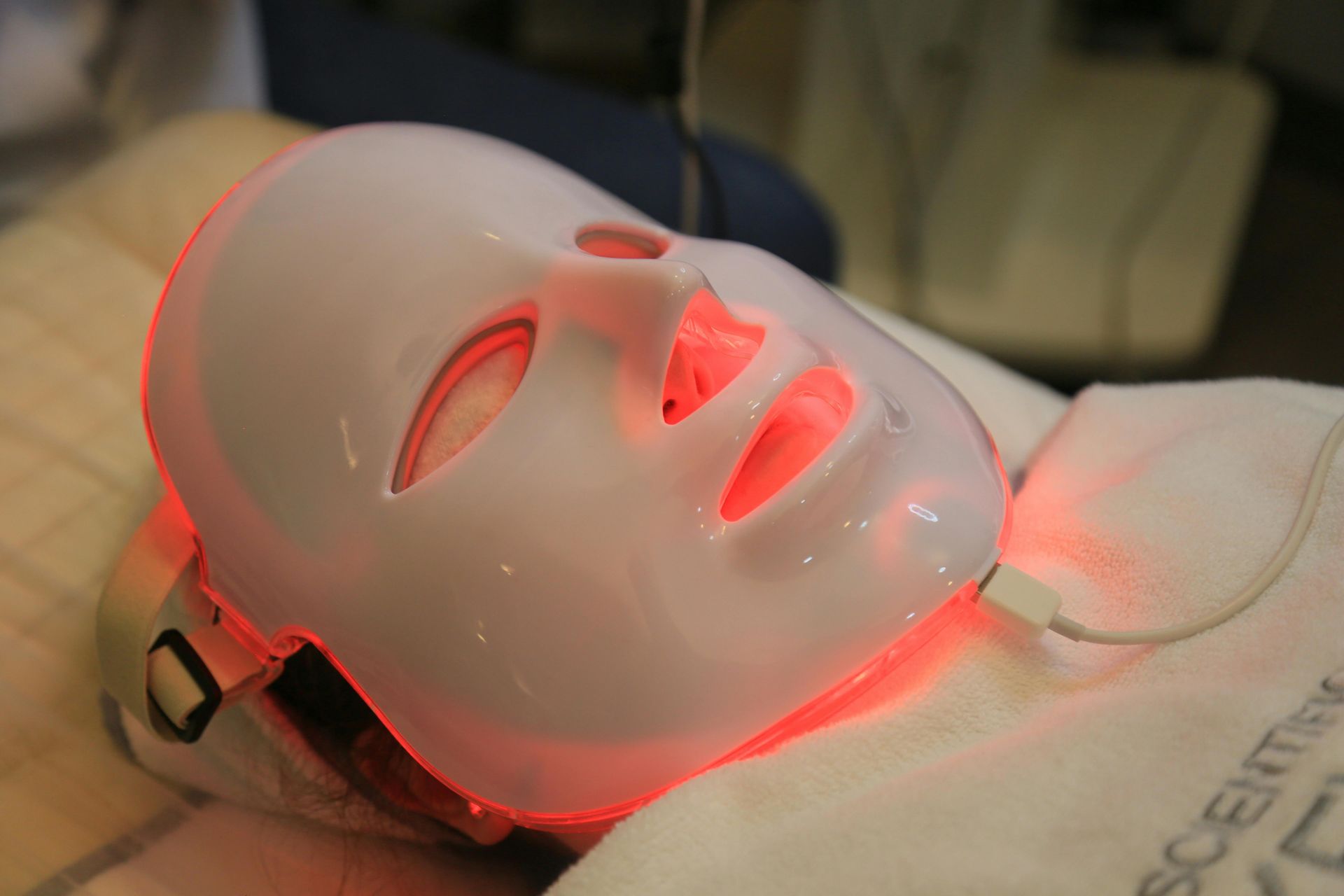The Silent Threat: Prediabetes

The Silent Threat: Pre-diabetes
Patients often come to me saying they haven't changed anything, yet their lab results show prediabetes. Most of the time, they have no symptoms. This silent condition can lead to type 2 diabetes if not addressed. But what exactly is prediabetes, and why is it so dangerous?
Understanding Pre-diabetes
Pre-diabetes occurs when your blood sugar levels are elevated but not high enough to be classified as diabetes. It's essentially a warning sign that you may be on the path to developing type 2 diabetes. One of my instructors in nurse practitioner school aptly described a prediabetic as a "diabetic in training." The crucial thing to understand is that prediabetes is a reversible condition! However, it often presents no symptoms and is typically diagnosed through a blood test.
Why Menopause Increases Diabetes Risk
When women go through menopause, several changes in the body can increase the risk of developing type 2 diabetes:
1. Hormone Changes: The decrease in estrogen levels makes it harder for the body to use insulin effectively, leading to higher blood sugar levels. Insulin is a hormone that helps sugar from food get into your cells to be used for energy.
2. Weight Gain: Many women gain weight around their abdomen during menopause, which contributes to insulin resistance. Insulin resistance is when the body's cells don't respond well to insulin, making it hard for sugar to enter cells and causing high blood sugar levels. This can lead to prediabetes, diabetes, weight gain, and more health issues, especially during menopause when hormone changes can worsen insulin resistance.
3. Loss of Muscle Mass: Menopause often leads to a decrease in muscle mass. Muscle tissue helps the body manage blood sugar, so losing muscle can make it harder to control blood sugar levels.
4. Early Menopause: Women who experience menopause before age 45 are at a higher risk of developing type 2 diabetes.
5. Metabolic Changes: Menopause can lead to changes in fat distribution, increased total body fat, and decreased energy expenditure, all of which contribute to a higher risk of type 2 diabetes.
The Role of Hormone Replacement Therapy (HRT)
Hormone Replacement Therapy (HRT) can play a potentially beneficial role in managing diabetes risk during menopause:
1. Reduced Diabetes Risk: Large randomized controlled trials suggest that menopausal hormone therapy delays the onset of type 2 diabetes in women. Some studies found HRT reduced the incidence of type 2 diabetes in postmenopausal women.
2. Improved Glucose Control: HRT was shown to improve glycemic control in postmenopausal women with type 2 diabetes, including reductions in HbA1c and fasting glucose levels.
3. Metabolic Benefits: HRT appears to have favorable effects on glucose metabolism, insulin sensitivity, and body fat distribution. This may help counteract some of the metabolic changes during menopause that increase diabetes risk.
4. Early Initiation Benefits: Starting HRT early in menopause (within 10 years) seems to provide the most metabolic and cardiovascular benefits.
5. Individualized Approach: While HRT may be beneficial, it's not recommended solely for diabetes prevention. The decision to use HRT should be individualized based on a woman's overall health, risks, and symptoms.
6. Route of Administration Matters: Transdermal estrogen (estrogen given through the skin) may be preferable to oral estrogen in women with diabetes who have cardiovascular risk factors.
7. Short-term Use: Even short-term use of HRT (6 months) was found to improve glucose regulation in some studies.
HRT is not a one-size-fits-all solution for preventing diabetes. While it might help, it comes with its own set of risks. That's why it's crucial to talk to your own healthcare provider about whether it's right for you. They'll consider your unique health situation, potential risks, and how badly those menopausal symptoms are bothering you. If you're already dealing with diabetes and your experiencing menopausal symptoms, like hot flashes, night sweats, or sleep disturbances, then HRT might offer a silver lining - it could help manage your blood sugar too. But, it's all about finding what works best for you!
The Risks of Pre-diabetes
If left untreated, pre-diabetes can lead to several serious health problems:
1. Type 2 Diabetes: According to the Centers for Disease Control and Prevention (CDC), up to 70% of people with pre-diabetes will go on to develop type 2 diabetes if they don't make lifestyle changes. Essentially, your body might completely lose its ability to control blood sugar, leading to the more serious condition, type 2 diabetes.
2. Heart Disease and Stroke: The American Heart Association states that people with pre-diabetes have a 50% higher risk of heart disease and stroke compared to those with normal blood sugar levels. The high blood sugar can damage your blood vessels and increase the risk of heart problems.
3. Kidney Disease: The National Kidney Foundation reports that about 1 in 3 adults with diabetes has kidney disease. Over time, high blood sugar can harm your kidneys, making it harder for them to clean your blood properly.
4. Vision Problems: The American Diabetes Association notes that diabetes is the leading cause of new cases of blindness among adults aged 20–74 years. Sadly, high blood sugar can damage the tiny blood vessels in your eyes, potentially leading to vision loss.
5. Nerve Damage (neuropathy): According to the National Institute of Diabetes and Digestive and Kidney Diseases, about half of all people with diabetes have some form of nerve damage. High blood sugar can damage your nerves, especially in your feet and legs, causing pain or loss of feeling.
Diagnosing Prediabetes
To diagnose prediabetes, doctors typically use the following tests, but this list is not totally inclusive to all testing used:
- Fasting Plasma Glucose (FPG) test
- Oral Glucose Tolerance Test (OGTT)
- Hemoglobin A1C test (5.7% to 6.4%)
- I like to add a fasting insulin level, and preferably it is below 9 microunits per milliliter (uIU/mL)
If your results fall within a certain range, you may be diagnosed with prediabetes.
Supplements: Do They Work?
While lifestyle changes are the first line of defense, some supplements and medications may help. Based on the evidence, some supplements may help with pre-diabetes, but the results are mixed and more research is needed. Let's break this down in simple terms, and remember, always talk to your own healthcare provider before taking any supplements, as they can interact with medications or cause side effects.
1. Vitamin D shows the most promise for people with pre-diabetes. Studies have found that taking vitamin D supplements lowered the risk of developing diabetes by 15% in people with pre-diabetes. Essentially, about 30 people with pre-diabetes would need to take vitamin D for one person to avoid getting diabetes. However, researchers aren't sure about the best dose to take, and too much vitamin D can be harmful, so again clear it with your own provider.
2. Magnesium might help improve blood sugar levels and other health markers in people with diabetes, which suggests it could be helpful for pre-diabetes too. Good food sources of magnesium include whole grains, leafy green vegetables, legumes, and nuts.-
3. Some small studies show that alpha-lipoic acid (ALA) might help improve blood sugar control. However, more research is needed to be sure about its effects on pre-diabetes.
4. There's some evidence that these supplements, chromium, cinnamon, and berberine might help with blood sugar control. But the studies are limited, and we can't draw clear conclusions yet.
Medications:
If lifestyle changes aren't enough, your provider might prescribe medications such as:
- Metformin: This is often the first medication used for pre-diabetes and type 2 diabetes.
- GLP-1 receptor agonists: These can help with blood sugar control and weight loss.
- Consider hormone therapy if you are a good candidate for it.
Your pre-diabetes prevention action plan:
To prevent pre-diabetes from progressing to type 2 diabetes, you can follow an action plan based on evidence. This plan involves lifestyle changes, including exercise, diet, and maintaining a healthy circadian rhythm. Circadian Rhythm is your body's internal clock that regulates sleep-wake cycles and other physiological processes, it is linked with better blood sugar control and reduced risk of diabetes. Here’s a simplified explanation:
1. Sync with the Sun: Your circadian rhythm is deeply connected to the natural light-dark cycle. Get outside for at least 30 minutes of morning sunlight. This helps regulate your body's internal clock, improving sleep quality and metabolic function.
2. Move That Body: Exercise regularly! Exercise helps your body use insulin better, which lowers blood sugar levels. Exercise also helps you maintain a healthy weight, further reducing risk of diabetes! Morning or early afternoon workouts can help reset your circadian rhythm and improve insulin sensitivity. Avoid intense exercise close to bedtime as it may disrupt your sleep. Activities like walking, jogging, swimming, or cycling are beneficial. Aim to get 150 minutes of moderate-intensity exercise per week. Start where you are though, even ten minute increments performed three times daily has proven beneficial or 30 minutes a day, five days a week. In addition, add strength-training exercises, like lifting weights or using resistance bands, two or more days a week.
3. Eat a balanced diet, on schedule if possible: Eat a mix of low-glycemic fruits, like blueberries, vegetables, lean proteins, and healthy fats, like salmon and avocados. Increasing protein and fiber intake are important dietary steps to take for balanced blood sugar. Also, try to have meals at consistent times each day, as this helps regulate your body's internal clock and metabolism. I often say, eat when the sun is up, not when the moon is up, and avoid eating three hours before bed. Reduce intake of sweets, sugary drinks, and refined carbs, like bread and past, and be mindful of portion sizes to avoid overeating. Eating balanced meals keep your blood sugar stable, helps you maintain a healthy weight, and reduces diabetes risk!
Studies show that lifestyle interventions focusing on diet and exercise can reduce the risk of developing diabetes by 40%-70% in people with pre-diabetes!
4. Create a Sleep Sanctuary: Go to bed and wake up at the same time every day, even on weekends. Aim for 7-9 hours of quality sleep per night. Keep your bedroom dark, quiet, and cool.Get plenty of natural light during the day and limit exposure to screens and bright lights before bedtime. This helps your body produce melatonin naturally, promoting better sleep and supporting your circadian rhythm. A well-regulated sleep pattern supports healthy circadian rhythms, which in turn helps manage blood sugar levels.
6. Manage Stress: Chronic stress can disrupt your circadian rhythm, increase stress hormones that can raise blood sugar levels, and increase diabetes risk. Practice relaxation techniques like meditation, deep breathing, or yoga, especially in the evening to wind down.
7. Regular Check-ups: Keep those doctor appointments! Regular monitoring of your blood sugar, along with discussions about how menopause might be affecting your circadian rhythm and overall health, is crucial. Remember, pre-diabetes is often a silent condition, and early detection and management of any changes can prevent complications.
By aligning your healthy daily habits with your body's natural circadian rhythm, you're not just preventing diabetes – you're optimizing your overall health and well-being. Small, consistent changes can lead to big results!
Why This Matters NOW
Menopause is inevitable for all of us, but type 2 diabetes, or other chronic diseases are not! By making the decision to take action today, you’re investing in a healthier, more vibrant future. Imagine sailing through your 50s, 60s, and beyond with energy, confidence, and great health. That’s the power of prevention! By taking control of your health now, you’re not just helping yourself – you’re setting an amazing example for your daughters, nieces, and all the women in your life!
So, what’s your first step going to be? A brisk walk after dinner? Swapping out that afternoon cookie for a handful of nuts? Truly, regular check-ups, a healthy lifestyle, and early intervention can make a big difference in preventing or managing these conditions. Start today because your future self will thank you!
















